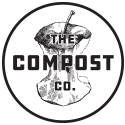Landscaping does not stop when the temperatures start to drop. For property managers, municipalities, and commercial landscapers, cooler weather is the perfect time to strengthen soil, protect plants, and prepare for changing conditions. Using these seasonal mulching tips to ensure landscapes look professional, stay healthy, and remain ready even as the season shifts.
Why Mulching Matters in Cooler Weather
Cooler weather creates unique challenges. Soil can compact, roots become stressed, and moisture patterns shift with lower rainfall and cooler nights. Mulch acts as a protective layer, stabilizing soil temperature, preventing erosion, and retaining moisture. For large-scale landscaping jobs, mulching at this time of year also helps reduce maintenance needs through the winter and early spring.
Choosing the Right Mulch Materials
The Compost Company provides two types of mulch, each designed to meet different needs for properties of all sizes:
- Natural Hardwood Mulch: A durable, long-lasting option that provides excellent coverage for commercial landscapes, office properties, and residential projects. It creates a clean, professional look while helping to regulate soil temperature and suppress weeds.
- Compost Mulch: A unique blend that combines the benefits of compost and mulch in one product. Compost Mulch not only insulates and protects soil but also feeds it with nutrients over time. It’s an efficient choice for property owners who want to improve soil health while maintaining a neat appearance.
Whether you are managing a business campus, a school, a municipal space, or a larger residential property, these mulch types provide both practical and aesthetic benefits. Ordering by the cubic yard makes it easier to cover larger areas without the waste and cost of bagged products.
How Mulch Should Be Applied
Depth matters when it comes to mulching. Applying too much mulch can trap moisture and damage roots, while too little leaves soil exposed. A balanced layer protects soil, regulates temperature, and improves the overall look of any property.
- 2–3 inches for garden beds and property edges
- 3–4 inches for trees and shrubs that need extra insulation
- 1–2 inches for high-traffic or decorative areas where airflow is important
Mulch should always be applied evenly, with care taken to avoid piling it against tree trunks or plant stems. For easy planning, try using The Compost Company’s Compost Calculator to estimate how much mulch you’ll need for your space.
Timing Mulch Application Before Winter
Late-season mulching is best scheduled once temperatures consistently cool but before the soil hardens. This timing allows mulch to settle in and provide maximum insulation and moisture retention before winter. Contractors managing multiple properties often schedule projects from late September into November to stay ahead of harsher conditions.
Delivery and Logistics for Larger Projects
For landscapers managing multiple sites, efficiency is key. Bulk mulch delivery helps crews cover more ground with less downtime. Options include:
- Delivery by the cubic yard for large installations
- Staged drop-offs for projects across multiple sites
- Seasonal orders to lock in supply and avoid shortages during peak demand
Bulk ordering also reduces packaging waste, making it a sustainable choice.
Best Practices for Seasonal Mulching
Whether you’re managing a business property, a municipal space, or your own home landscape, there are a few best practices that help mulch perform its best during cooler weather:
- Apply evenly across the surface: Consistent coverage keeps soil protected and looking professional.
- Combine with compost for added benefits: Pairing mulch with compost enriches soil, improves structure, and sets plants up for healthier growth.
- Focus on erosion control: On slopes or exposed areas, mulch helps prevent runoff and soil loss during seasonal rains.
- Check back in spring: A quick inspection in early spring ensures mulch is still doing its job and lets you refresh areas that need a touch-up.
Following these practices keeps outdoor spaces functional, sustainable, and visually appealing through seasonal changes.
Final Thoughts
Cooler weather brings opportunities to prepare landscapes for the months ahead. Mulch protects soil, conserves moisture, and prevents erosion, making it a valuable tool for businesses, municipalities, and homeowners alike. Planning ahead with bulk delivery ensures projects stay on schedule and ready for the next season.
Looking for reliable supply? The Compost Company provides high-quality Natural Hardwood Mulch and Compost Mulch by the cubic yard, delivered throughout Tennessee and neighboring states. Use our Compost Calculator to estimate what you’ll need, and schedule delivery with confidence.



